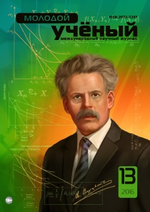Language is an instrument of communication. It is a system of signs, tools and rules of speaking, common to all members of society. This article is devoted to analysis lingvo-stylistic features of irony (in the works of O’Henry).
Linguistics is the science that studies languages and human language in general. It gives information about what language stands out among other phenomena, what are its elements and units, how and what changes occur in the language. Linguistic has the following sections: lexicology, phraseology, phonetic, stylistic, grammar and so on. Our research is devoted to the lingvo-stylistic analysis, so before analyzing the works let’s look through with stylistic, its origin, aim and meaning.
The stylistics is called the science of the use of language, a branch of linguistics that investigates the principles and the effect of selection and use of lexical, grammatical, phonetic, and linguistic resources for the transmission of thoughts and emotions in different conditions of communication. There is a stylistic of language and the stylistics of speech, linguistic stylistics and literary stylistics, the stylistics of the author and the stylistic of perception, decoding stylistics, etc. The tasks of stylistics:
- An analysis of the selection of certain linguistic resources in the presence of synonymous forms of expression for the adequate and effective transfer of information.
- Analysis of the fine expressive means of the language at all levels (phonetic — alliteration, semantic — an oxymoron, syntactic — inversion).
- Determination of functional tasks; identifying stylistic functions performed by linguistic means.
Stylistic analysis of the text makes it possible to understand more clearly the meaning and evaluate a particular product. The main objective of the first stage of the analysis is to determine the structure of the text material and its semantic meaning. What follows is the most thorough study of all the details. But stylistic analysis is done with the help of stylistic devices such as metaphor, epithets, allegory, metonymy, irony and so on. In this article it will be considered the stylistic devices — irony.
Irony is a hidden mockery, in which the word takes on a positive value of opposite meaning. Basis of irony is a sense of superiority over the speaker, what or whom he says. I. R. Galperin considered: «Irony is generally used to convey a negative meaning. Therefore only positive concepts may be used in their logical dictionary meanings» [1]. And of course character of irony is dependent on the personality of the author, his social status, political beliefs, aesthetic views, ethical ideas — this is reflected in the ratio of irony expressed only through language, and irony expressed predominantly extra-linguistic tools that are still not sufficiently investigated and needs to be further developed for deeper interpretation of literary thinking writer.
Many authors used in their works irony and one of them is O’Henry.
The American writer O’Henry entered the history of literature as a great master of humor and irony. Let’s analyze irony in the short story «The Last Leaf» by O’Henry.
«The Last Leaf» refers to the fact that there are real love and self-sacrifice in the world, and that they can work wonders. It tells the story of how, with the help of cunning girl Sue and old artist Mr. Berman saved from dying of pneumonia Jonesy. Jonesy has convinced herself that she would die when the wind will come off the last leaf of ivy. And nobody, not even a close friend Sue, could not persuade her. Then Mr. Berman went to the trick — he drew the last sheet and attached it outside Jones. And she realized that she must fight for her life, at the end of the story the heroine learns tricks of Mr. Berman and that he died of pneumonia, saving her.
Irony in the story by O. Henry helps to create a contrast: Moses — a satyr and a dwarf, rock — teapot, a cowboy and elegance. Introducing characters, the doctor's words about a patient who «starts counting coaches in his funeral procession», a look at the creativity and Sue Berman: «Art is a way paved with pictures for magazine stories that young authors pave their way into literature» or «twenty five years stood on an easel untouched canvas, ready to take the first line of the masterpiece» – details not only giving an ironic attitude of the author to his characters, but at the same time carrying the life-affirming stories of O`Henry beginning. In this example, the author used stylistic device irony to create a comic effect and expression of emotional tension.
In the short story «The Gift of the Magi», of O’Henry a young couple is too poor to buy each other Christmas gifts. The man sells his pocket watch to buy his wife a set of combs for her long, beautiful hair. She, meanwhile, cuts off her beautiful hair and sells it to a wig-maker for money to buy her husband a watch-chain.
The author uses irony in this story to compel the reader to stop and think about love, sacrifice and what is truly valuable. Simple human love, which the author raises to a height of wisdom of the Magi, is a huge gift to buy for any money.O. Henry with a smile endorses the actions of their heroes. In this example, the author used stylistic device irony to create aesthetic function and expression of emotional tension.
We can conclude this article, that irony does not only highlight the shortcomings, but also has the ability to laugh, to expose unjust claims, giving themselves these claims ironic sense, as if forcing ridiculed phenomenon to mock over itself. Also irony as a stylistic device has the following functions: aesthetic, increase emotional tension and comic effect, and the author uses irony to mock some actions that you don’t have to do, or the cases that can occur in the life of any person.
References:
- R. Galperin. Stylistics, Высшаяшкола, 1981.
- O’Henry. «The Gift of the Magi», 1906.
- O’Henry. «The Last Leaf», 1907.







